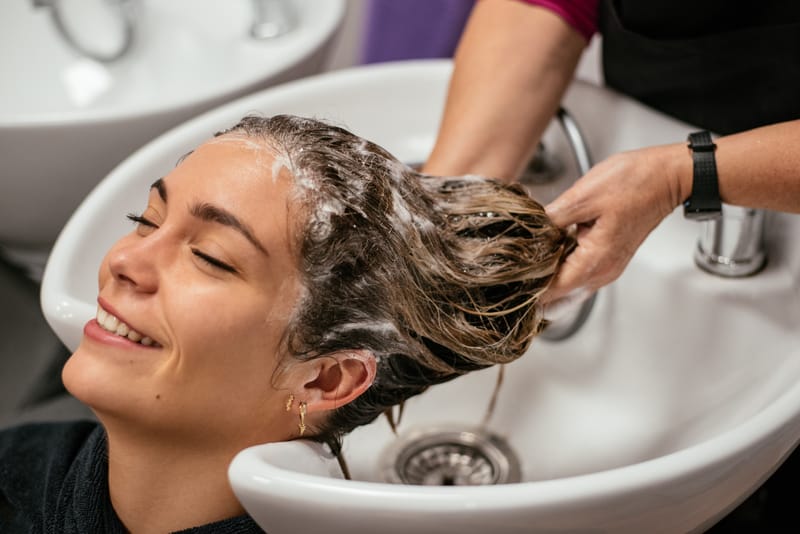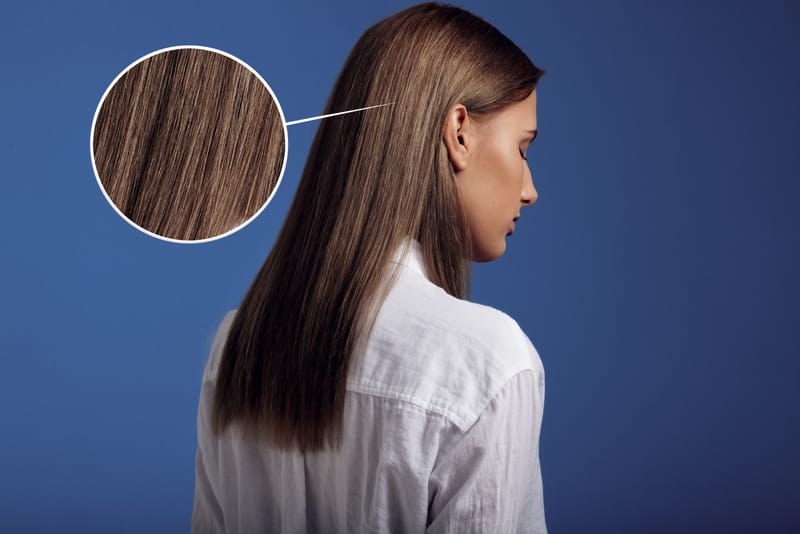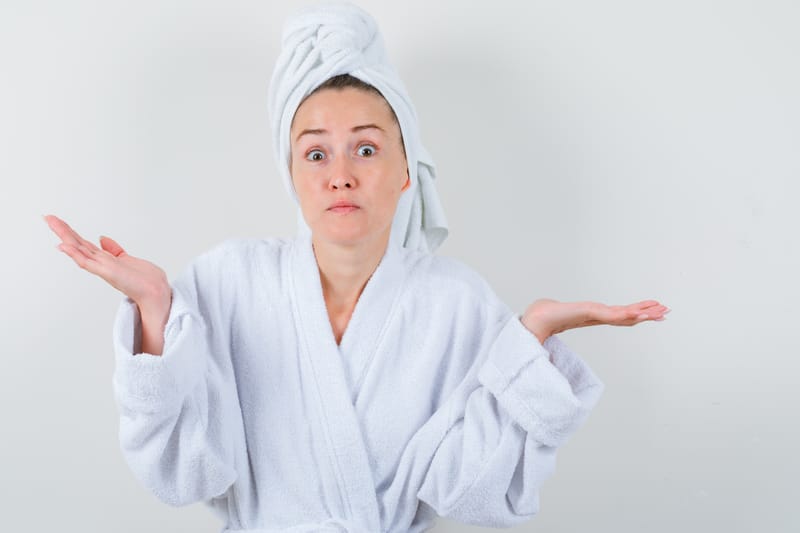Understanding the structure of your hair is crucial for maintaining its health and beauty. In this comprehensive guide, we'll dive into the world of hair bonds. These are the unsung heroes that determine the strength, elasticity, and overall health of your locks. Whether you're a hair care enthusiast or just looking to keep your hair in top shape, knowing about these bonds will help you make informed decisions about your hair care routine.
Key Takeaways:
- There are three main types of hair bonds: hydrogen bonds, salt bonds, and disulfide bonds.
- Proper hair care, including the use of bonding shampoo, can help maintain and restore these bonds for healthier hair.
- Understanding the differences between these bonds can lead to better hair care practices and prevent damage.
Hydrogen Bonds: The Flexible Friend
Hydrogen bonds are the most numerous but weakest of the hair bonds. They are responsible for the hair's shape and can be easily broken by water or heat, which is why your hair can change shape after washing or using heat styling tools. However, they also reform quite easily once the hair dries or cools down, allowing for temporary styling without long-term damage.
Bonding shampoo can play a role in supporting these bonds. By maintaining the hair's natural pH balance and providing moisture, a good bonding shampoo helps to strengthen hydrogen bonds. This results in hair that can better withstand the rigors of styling and environmental stressors.
Salt Bonds: The Sensitive Connectors
Salt bonds are formed between keratin proteins in the hair and depend on the pH level of your hair. They are stronger than hydrogen bonds but weaker than disulfide bonds. Because they are pH-sensitive, using hair care products that are too acidic or too alkaline can break these bonds, leading to hair that is weaker and less elastic.
To protect salt bonds, it's important to use hair care products that are pH-balanced. Bonding shampoos that are specifically formulated to maintain the hair's natural pH can help preserve these bonds, ensuring that your hair remains strong and resilient.
Disulfide Bonds: The Mighty Links
Disulfide bonds are the strongest of the three types of hair bonds. They provide the hair with its strength and durability. These bonds are formed between sulfur atoms in the amino acid cysteine, which is found in the hair's keratin structure. Disulfide bonds are not easily broken by water or heat, but they can be altered by chemical treatments such as perms and relaxers.
To maintain the integrity of disulfide bonds, it's crucial to minimize chemical treatments and use bonding shampoos and conditioners that contain ingredients like keratin or amino acids. These ingredients help to repair and rebuild disulfide bonds, keeping your hair strong and healthy.
The Role of Bonding Shampoo in Hair Care
Bonding shampoos are specially formulated to support and repair the hair's natural bonds. They often contain ingredients that help to reinforce hydrogen, salt, and disulfide bonds, making them an essential part of any hair care routine. By using a bonding shampoo regularly, you can help prevent damage and keep your hair looking its best.
When selecting a bonding shampoo, look for products that contain ingredients like keratin, amino acids, and pH-balancers. These ingredients work together to strengthen hair bonds and promote overall hair health.
Preventing Damage to Hair Bonds
Preventing damage to hair bonds starts with understanding what causes it. Heat styling, chemical treatments, and environmental factors can all weaken hair bonds. To protect your hair, it's important to use heat protectant products when styling, limit chemical treatments, and use bonding shampoos that help to repair and strengthen hair bonds.
Additionally, incorporating regular deep conditioning treatments into your hair care routine can provide an extra layer of protection for your hair bonds. These treatments can help to replenish moisture and nutrients, keeping your hair bonds strong.
The Impact of Diet on Hair Bonds
Your diet can also have a significant impact on the health of your hair bonds. Eating a balanced diet rich in vitamins, minerals, and proteins can provide the building blocks needed to maintain strong hair bonds. Foods high in sulfur, such as garlic, onions, and eggs, can be particularly beneficial for supporting disulfide bonds.
Staying hydrated is also important for maintaining healthy hair bonds. Drinking plenty of water helps to keep your hair hydrated from the inside out, supporting the hydrogen bonds that give your hair its flexibility and shape.
Hair Bond Repair: Treatments and Techniques
When hair bonds are damaged, there are treatments and techniques that can help to repair them. Bond-building treatments, often found in salons, can help to restore broken disulfide bonds. These treatments typically contain ingredients that mimic the hair's natural bonding structure, effectively repairing and rebuilding the hair.
At home, using bonding shampoos and conditioners, as well as leave-in treatments that contain bond-repairing ingredients, can help to maintain the results of professional treatments and keep your hair bonds strong between salon visits.
The Science Behind Hair Bonding Products
Hair bonding products are designed with ingredients that target the different types of hair bonds. For example, products containing dimethicone and hydrolyzed proteins can help to protect and reinforce hydrogen and salt bonds. Meanwhile, products with ingredients like bis-aminopropyl diglycol dimaleate are known for their ability to repair disulfide bonds.
When choosing hair bonding products, it's important to look for those that have been scientifically formulated to target the specific bonds in your hair. This ensures that you're using products that will effectively support and repair your hair's structure.
The Future of Hair Bond Care
As the science of hair care continues to advance, we can expect to see new and innovative products that target hair bonds more effectively. Researchers are constantly looking for ways to improve the strength and resilience of hair bonds, which could lead to breakthroughs in hair care technology.
Staying informed about the latest developments in hair bond care can help you to choose the best products and treatments for your hair, ensuring that it remains healthy and strong for years to come.
Summary
Understanding the three types of hair bonds—hydrogen, salt, and disulfide—is key to maintaining healthy hair. Each bond plays a unique role in the hair's structure and requires specific care to remain intact. Bonding shampoos and other haircare products can help to support and repair these bonds, preventing future damage, or even major damage promoting overall hair health. By incorporating the right products into your routine and being mindful of the factors that can damage hair bonds, you can keep your hair looking and feeling its best.
FAQ Section
Q: Can bonding shampoos really repair damaged hair bonds? A: Yes, bonding shampoos can help repair damaged hair bonds, especially when they contain ingredients that target specific types of bonds. They work by reinforcing the hair's natural structure and providing the nutrients needed to rebuild broken bonds.
Q: How often should I use a bonding shampoo? A: The frequency of use will depend on your hair type and the level of damage. Generally, using a bonding shampoo 2-3 times a week is recommended for maintaining healthy hair bonds. However, if your hair is particularly damaged, you may benefit from more frequent use.
Q: Are there any natural remedies for strengthening hair bonds? A: While natural remedies may provide some benefits, they are unlikely to be as effective as scientifically formulated bonding shampoos and treatments. However, maintaining a healthy diet and protecting your hair from excessive heat and chemical treatments can naturally help to preserve hair bonds.
For more information about Bonding Shampoo please click the link below!








